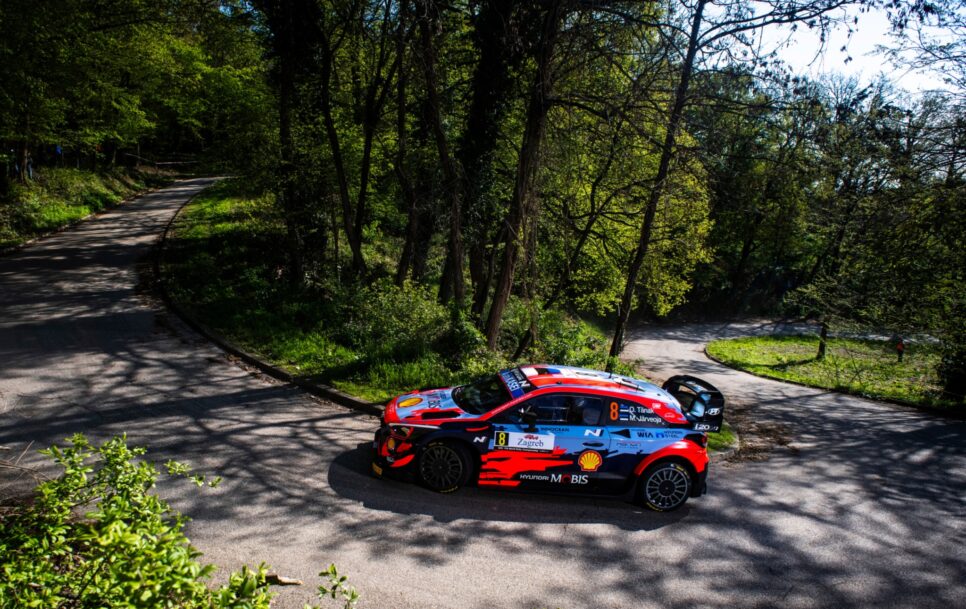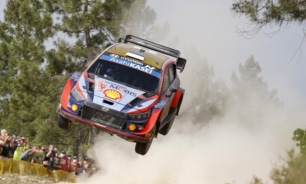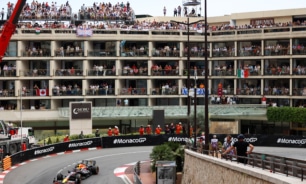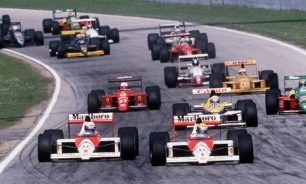What do you need to know about asphalt rallies and is there such a thing in Croatia?
From the moment of its creation in 1973, the World Rally Championship has always been raced on different surfaces. After all, we have gravel, snow, and asphalt rallies, all of which are different and thus make the WRC diverse and exciting. Although… when it comes to asphalt rallies, for many they are not exactly overly exciting.
“Asphalt is what I went to school on or what I still walk on. There is no spectacle in it,” veteran journalist David Evans has said, for example.
“On an asphalt rally, it’s about who is the best on brakes, has the most economical cornering technique and is the fastest on the gas pedal after passing the corner. Broadly speaking, we can talk about one racing line at rallies,” he expanded his thoughts and made it clear quite bluntly that he is still a through-and-through gravel rally fan.
“On gravel, you can fly into a corner with too much momentum, pull the handbrake, let the rear of the machine “fly”, but then still continue driving. It’s a real show,” Evans finished his thought.
Asphalt offers showtime as well
It’s hard to argue with the latter, although… you can also see the show on an asphalt rally. Let’s take, for example, the super special stages planned for the delight of fans – and generally to the chagrin of drivers – where the organizers stash more and more hay bales year after year.
So that the drivers could put on a show for the crowds by making “doughnuts” around them: burning rubber and squealing tyres.
At the same time, the show has also been offered to the fans gathered by the track without artificial hay bales. Here, let’s recall, for example, the 2002 Catalunya rally, where the French winner Gilles Panizzi did a “doughnut” on the turn-off just like that and from his goodwill.
If we mention the French, they generally tend to dominate asphalt rallies. In the 1990s, it was done by Panizzi, Philippe Bugalski, François Delecour and Didier Auriel, and in the 21st century, Sebastien, or Loeb and Ogier. The latter, it is true, are skilled on other surfaces as well, which is also indicated by the World Championship titles standing on their mantelpieces.
On the specifics of asphalt rally
But what are the pitfalls the French can hit on the tarmac better than others? As Evans mentioned above, it’s important to find the right driving line on hard surfaces. Or even more simply: the ideal trajectory.
Asphalt rallies must be approached in a radically different way than gravel ones. First, the risk of a flat tire is not so great there, so there is no need to cover/protect as much. This automatically means larger wheel wells, which in turn allows for stiffer and wider tires.
Everything described above means only one thing in rally language: more grip.
Larger tires also allow for larger rims that accommodate larger brake discs and calipers. The result: insanely better braking performance!
However, this is extremely important when considering asphalt rallies, as it allows the drivers to step on the brake pedal significantly later (and more aggressively), thereby bringing out a completely different driving style compared to gravel rallies.
Smoother roads also mean that the machines don’t have to endure the bumps and jolts typical of gravel rallies, which is why a much stiffer and shorter suspension is used when racing on asphalt. As a result, the machines are also lower, which again increases handling and handling.
The importance of weather
However, everything described above applies in dry conditions, when the sun is shining, the birds are chirping and the engines are roaring. However, if the thunder rolls, the situation is quite the opposite.
From the moment the first drop lands on hard ground, the grip begins to disappear, turning the asphalt into a skating rink at times. In such circumstances, of course, it is possible to do a lot with (rain) tire tactics, but if you don’t hit the mark with tires, you are guaranteed to lose time. Or sometimes the chance of getting on out there at all…
Since the Croatian rally takes place in the spring, we cannot ignore the matter of the weather in this case either. Although a lot can change in three or four days – the national news broadcasting for example often can’t even predict the next day’s weather – now it seems, that the drivers in Croatia are bound to get some light rain.

It is worth emphasising that Croatia is challenging for drivers even in dry weather, because the asphalt there does not run on a so-called circuit, but – as always in the Balkans – it’s patchy, thereby offering a little surprise in terms of (ideal) trajectory in every turn. Those who don’t believe us at this point should take a look at what the drivers have to say about it.
Ott Tänak: “Croatia is a very fun asphalt rally. The grip is relatively low there and the road surface can get muddy relatively quickly. At the same time, a lot of jumps await us, even in dark corners. There are relatively few asphalt rallies in our calendar at the moment, we only drive a couple of them a year, so that’s why it’s special.”
Thierry Neuville: “Croatia is undoubtedly one of the most demanding asphalt rallies I’ve ever competed in. There are a lot of blind corners followed by jumps, something that is not very typical of an asphalt rally.
However, I like the challenges in Croatia because the combination of profile and speed of the tests there is a unique challenge in the World Series. If it rains there, the roads are very similar to those in Belgium, which gives us a certain advantage. At the same time, your car must behave perfectly both in the dry and in the wet, because in volatile weather – if the setting is a little off, you automatically lose confidence.”
Elfyn Evans: “We know that it is an extremely difficult rally, where the grip changes all the time, so it is very easy to make mistakes.”
Sebastien Ogier: “It was great to get into the Rally1 car again on the test day last week and drive it on demanding roads: fast and on a section spiced up with jumps and crests. Something like this is waiting for us in Croatia now, but we know that due to the weather, everything can change very often at this time of the year.”
Takamoto Katsuta: “I’m feeling more and more confident on asphalt after my performance on Rally Japan last year, and some stages of Monte-Carlo this year. However, Croatia is one of the trickiest rallies because of the amount of cutting and the number of surface changes.
Pushing hard when the road is muddy is definitely something I still need to improve on asphalt races. It won’t be an easy rally, and if it rains, it will be that much more difficult.”
This is what the drivers of Hyundai and Toyota had to say. How they – and also the men of M-Sport – will handle Croatia, will be revealed form the 18th to 21st of April.









